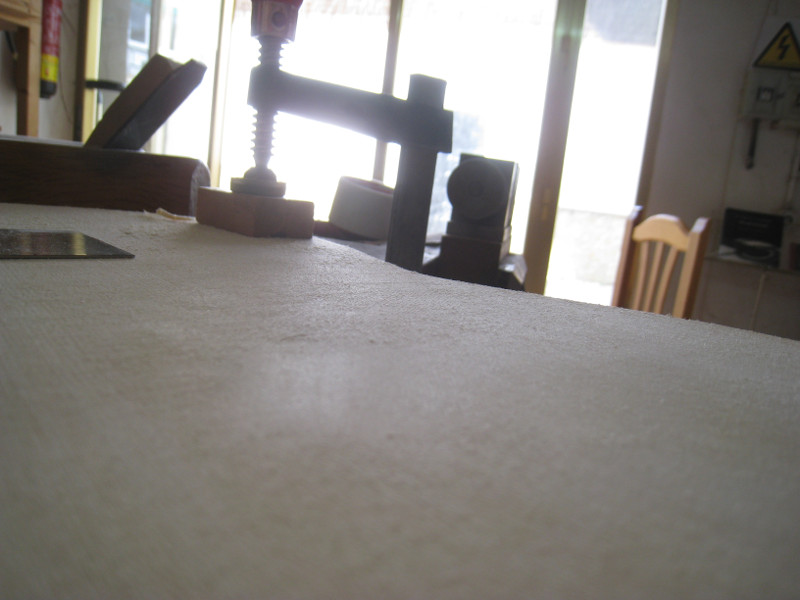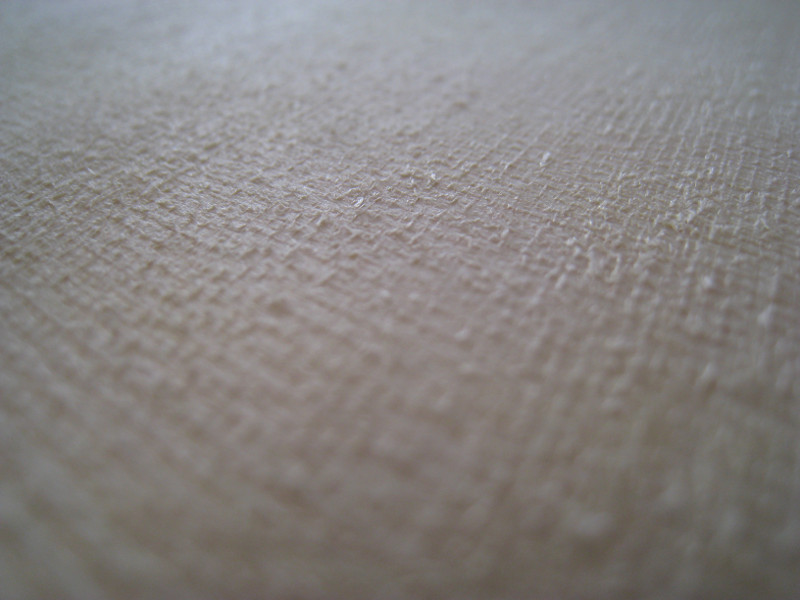It is advisable to hand plane tops as opposed to putting them through the agressive drum sanders that are often used for the hardwoods. Regardless of how you take the thickness down though, the last steps have to be taken in such a way as to guarantee the flatness and the uniformity of the top. Even if you work the top to varying thicknesses at different points the transitions must be very gradual so that glueing surfaces can be made perfect. Abrupt variations in thickness in a plate which is clamped between a mold and a bar will result in a joint with weak spots prone to vibration and cracking. In short you need flat surfaces on each side of the finished top whether these two surfaces are perfectly parallel and equidistant or not. The best way to assure flatness is to use a toothing plane. This tool makes marks on the high spots and leaves the low spots untouched. The high spots are then removed with a cabinet scraper and the process is repeated. Depending on how agressive the set of the plane is you will also be removing some material as you plane. When the plane makes uniform marking over the entire surface it will be perfectly flat. Careful sanding or scraping of the entire surface to remove the marks (but no more) will ensure that it remains flat. This first surface is best achieved while the plate is still quite thick, otherwise the unevenness of the opposite side can affect the results. Once one face is smooth and flat it can be placed on a very flat surface and the uneven side can be thicknessed and then flattened in the same way.
This tool makes marks on the high spots and leaves the low spots untouched. The high spots are then removed with a cabinet scraper and the process is repeated. Depending on how agressive the set of the plane is you will also be removing some material as you plane. When the plane makes uniform marking over the entire surface it will be perfectly flat. Careful sanding or scraping of the entire surface to remove the marks (but no more) will ensure that it remains flat. This first surface is best achieved while the plate is still quite thick, otherwise the unevenness of the opposite side can affect the results. Once one face is smooth and flat it can be placed on a very flat surface and the uneven side can be thicknessed and then flattened in the same way.  This photo shows a low spot which is not marked, and therefore more reflective, the surrounding area must be scraped and then the entire face planed again. Below you can see the parallel marks from the teeth which show that the blade
This photo shows a low spot which is not marked, and therefore more reflective, the surrounding area must be scraped and then the entire face planed again. Below you can see the parallel marks from the teeth which show that the blade is registering everywhere.
is registering everywhere.
The most important part of making and bracing a top is good glue joints and this technique will help you get those.
